Coffee 101, Dolce Gusto Guides, Keurig Guides, Milk Guides, Nespresso Guides, Tassimo Guides
Soy Milk Not Frothing? (Here’s how to Froth Soy Milk like a Pro!)
A homemade soy cappuccino just falls flat when that luxurious layer of froth you’re aiming for turns out to look more like a thin layer of bubbly foam. What is a plant-based coffee lover to do?
Why is soy milk not frothing?
And what can we do about it?
Why Listen To Us? Well, because we KNOW coffee! In fact, we make our own coffee, coffee machine cleaners, and reusable capsules which we've sold to over 41 countries. Our team ouf experts include Tristan (an engineer), Claire (a food writer) and Richy (a barista). So, whether you're looking for a recipe or repair guide, we've got you covered 💚
Table of Contents
What Is Soy Milk – and How is it Made?
Soy milk is a popular plant-based alternative to milk. You can drink it like milk, eat cereal with it, bake with it and add it to your coffee. It has a similar consistency and texture to milk with a neutral flavor.
Soy milk is made from soybeans. The beans are harvested and soaked in water before they are ground into a pulp and pressed through a filter to separate the liquid soy milk from the crushed remains of the soybeans. Commercial soy milks often add thickeners or sweeteners in addition to enriching the soy milk with vitamin B12 to help support the vegans and vegetarians who drink it.
What Exactly is Milk Froth?
Milk froth is a thick and dense layer of large bubbles that are created when milk is aerated.
Hot drinks that are made with steamed milk will generate a fine microfoam layer on top, but this is not real froth.
Real froth has volume and density. You can hold it on a spoon. It holds its form over time rather than dissipating. It has a rich texture with a creamy mouthfeel.
Milk froth is formed when milk is heated and aerated and the coiled proteins in the milk unwind. These uncoiled proteins create a patchwork net that bubbles bind to, preventing them from popping too quickly, thickening the milk with bubbles, and producing the characteristic froth.
Why is Soy Milk Harder to Froth than Regular Cow’s Milk?
The problem is in the proteins.
The issue with soy milk not frothing is that the proteins in soy milk are weaker than the proteins in cow’s milk, and they break down at a lower temperature. We want strong proteins that will preserve the bubbles, not weak proteins that break down into microfoam.
The Key to Frothing Soy Milk
It is possible to create a pretty good froth with soy milk – although it depends heavily on the soy milk you buy and it might still have less volume and density than frothed cow’s milk.
The most important factor is the soy milk you buy. Traditional soy milks don’t froth well, but some modern additives improve on this.
Gellan gum is added to some soy milks that are sold specifically for baristas. Gellan gum binds to the calcium in soy milk to create a base that the bubbles can form around. If you’re vegan or vegetarian, don’t worry – gellan gum is a vegan product that doesn’t harm animals.
Some other brands use different ingredients to create the same effect – carrageenan is one example.
Apart from your choice of soy milk, you can do a few important things to improve your froth:
1. Start Cold and Heat Slowly
Start with cold, refrigerated soy milk (and a cold frothing pitcher, if you are using one) to get the best results. A slow and gradual heating process gives the milk time to aerate without overheating.
2. Watch the Temperature
Soy milk has a lower protein quantity than cow’s milk, and those proteins are also weaker. Milk is traditionally frothed at a temperature of about 145F or 63C but the proteins in soy milk can break down and cause it to curdle at that temperature. If you are using an automatic frothing pitcher, turn down the temperature at least ten degrees.
3. Serve in Dark Roast
Soy milk is more vulnerable than cow’s milk to acidity, which can affect the quality of the froth and even lead to curdling. While there isn’t that much you can do about this from the soy milk side, you can achieve a better froth if you serve soy milk in a coffee with a lower acidity level, like a dark roast.
Our Guide to Frothing Soy Milk like a Pro:
How you want to froth soy milk will depend on what you are using:
How to Froth Soy Milk using a Nespresso Aeroccino Milk Frother
One of the appeals of the Aeroccino is that it is easy to use. You just choose a whisk, fill up the jug to the correct level and add the soy milk. Then you press a button.
If you choose to heat the milk, use a lower heat setting than you would with cow’s milk – no higher than 135F, or 57C.
How to Froth Soy Milk using a Steam Wand
Fill the frothing pitcher less than a third of the way with cold soy milk. The pitcher itself should be as cold as possible, and ideally the same temperature as the soy milk.
Release any water that condensed inside the steam wand by opening it and closing it again.
Place the tip of the steam wand into the milk until it is submerged 1/2 inch. Open the steam valve all of the way. Keeping the tip close to the surface allows it to draw air into the soy milk, creating larger bubbles.
You can swirl the pitcher slightly to create a whirlpool effect to distribute the foam evenly so it
doesn’t concentrate around the wand.
Keep frothing until it has increased significantly in volume, although it may not double. When the temperature reads 135F or 57C, remove the wand from the soy milk so that it doesn’t curdle.
How to Froth Soy Milk using a Hand Frother
If you are manually frothing soy milk with a hand frother and you want the milk to be heated, you will have to do that first on the stovetop using an espresso thermometer. When the temperature approaches 135F or 57C, take it off the burner.
Add the soy milk to the frothing pitcher and seal the lid. Test the plunger to make sure you won’t end up splashing yourself when you start vigorously plunging – especially if the soy milk is warm!
As you work at it, you will feel it getting harder to plunge. It is difficult to know when to stop and it will depend on the strength and pressure you apply as well as how long you do it. As a beginner, you can stop and open the lid to check. As you gain experience with a manual frother you will learn how to estimate when the froth is done.
With a hand frother, the process is the same for cow’s milk or soy milk, although it may take a little bit longer to froth soy milk.
What We Have Learned About Frothing Soy Milk
Soy milk presents a challenge to vegan and vegetarian baristas because it has a lower protein content than cow’s milk, and is harder to froth.
It is still possible to get a good result by choosing the right soy milk – one that contains additives like gellan gum or carrageenan that help the bubbles bind to something.
You can also get better results by starting with cold soy milk and heating it slowly, removing it from heat earlier than you would with cow’s milk (at 135F or 57C, rather than 145F or 63C), and serving it in low acidity coffee.
If you want to recreate your favorite frothy hot drinks with soy milk, there is hope. It just takes a little bit of preparation and practice.


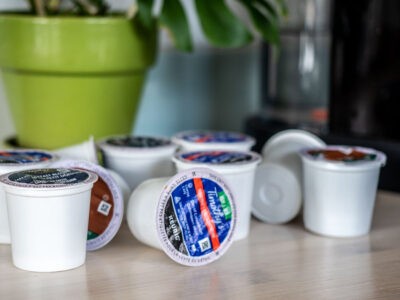
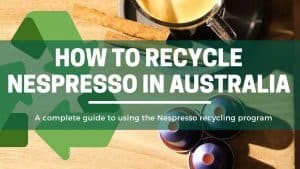
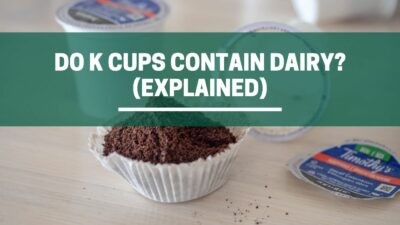
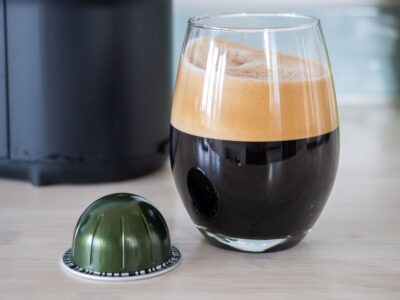
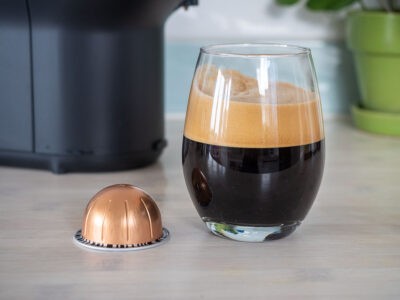
I have been using Silk SoyMilk for years, and I’ve found that sometimes it froths really well, and sometimes it doesn’t at all. Same exact carton. Consistently inconsistent for years. I use an Aeroccino frother every time. Any idea why this happens? Is there a brand that baristas use that is available for purchase? Thank you!
Hi Jennifer, the first thing the actually comes to mind is if you’ve washed your Aeroccino machine with soap? If there’s any traces of detergent it will kill any chances of froth you had with your soy milk. And this might explain why it sometimes works and sometimes doesn’t! Can you try only rinsing the frother with hot water instead of soap and see if that helps? Thanks 🙂